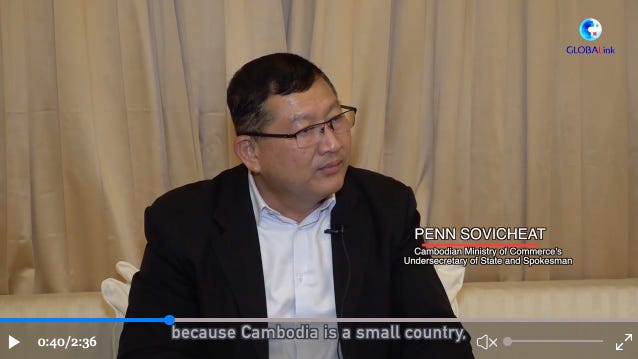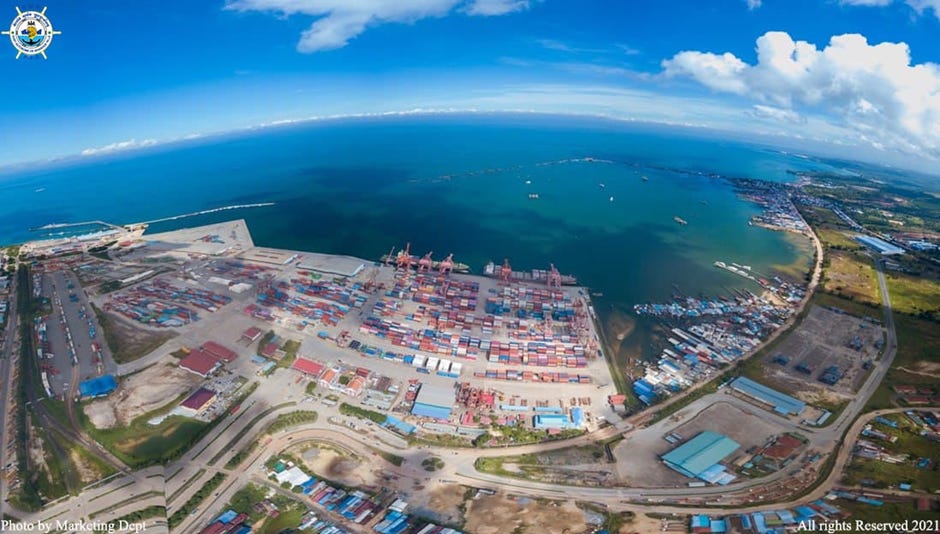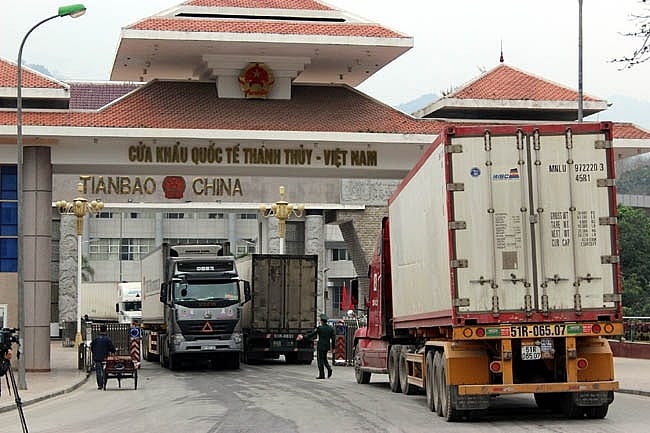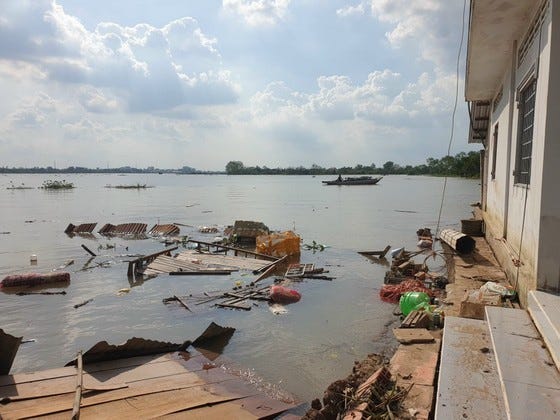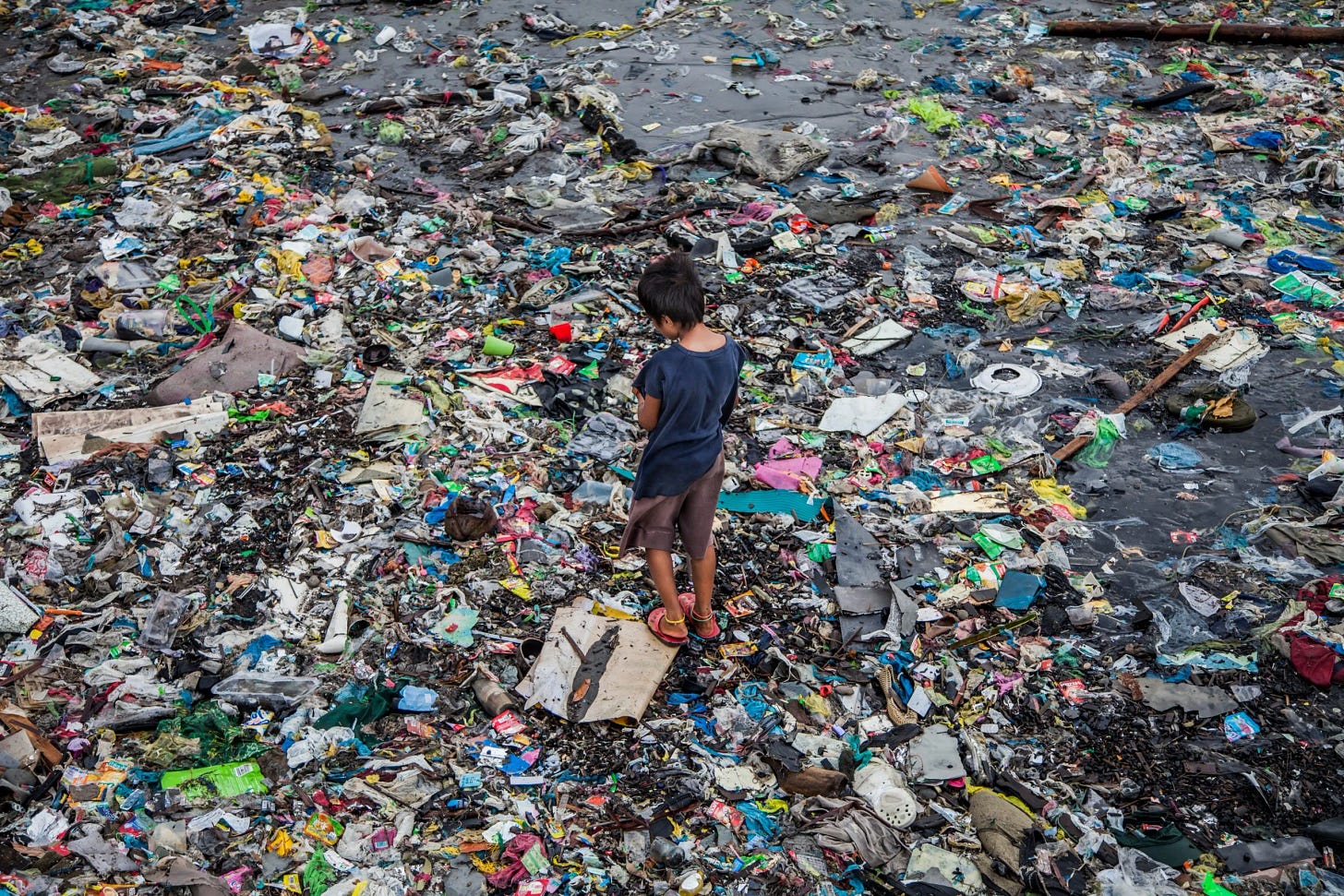Ups and Downs
China travel restrictions eased, Mekong is go to destination, RCEP good for Cambodia, Vietnam and China, and more needs to be done on Mekong ecology
UPDATE: The Long Mekong Daily is pleased to announce travel restrictions to China are relaxed. The Lancang-Mekong countries prepare for renewed travel influx for 2023. The RCEP gets a glowing report in China, Vietnam and Cambodia and Sihanoukville deep-water port transitions towards regional and global logistics hub. However, the Lancang-Mekong countries need to do more on river ecology with dolphins dying, plastic pollution choking the waterway and the delta suffering severe erosion. The Long Mekong Daily will soon be launching the Long Mekong Pulse to cover ecology, youth, sustainable development and much more every week. Stay Tuned!
China to Significantly Relax Its Travel Restrictions Starting January 8, 2023
China has finally decided to remove some of its most stringent travel restriction measures, a long-awaited move by business groups. Starting from January 8, 2023, China will no longer conduct nucleic acid tests and centralized quarantine for all inbound travelers, and measures to control the number of international passenger flights will be lifted, among others.
What are the changes?
On December 26, 2023, China’s National Health Commission (NHC), a cabinet-level executive department of the State Council that is responsible for formulating national health policies, announced that the official name for COVID-19, the “novel coronavirus pneumonia”, will be changed to the “novel coronavirus infection” (COVID-19 infections), and preventive and control measures for a Class B infectious disease will be applied to COVID-19 infections. Previously, novel coronavirus pneumonia was classified as a Class B infectious disease, but subject to the preventive and control measures for a Class A infectious disease, considering it’s highly contagious and harmful to human beings.
Moreover, COVID-19 infection shall no longer be included in the administration of quarantinable infectious diseases as stipulated in the Border Health and Quarantine Law of the People’s Republic of China.
In another circular released by the NHC on the same day, the Overall Plan for Implementing Class B Infectious Disease Management for COVID-19 Infections (the Overall Plan), it further clarifies that starting January 8, 2023, China will:
No longer impose quarantine measures on COVID-19 infections;
No longer identify close contacts of COVID-19 infections;
No longer delineate high and low-risk areas;
Provide classified treatment for COVID-19 patients and adjust medical insurance policies;
Adjust to PCR test to voluntary testing;
Adjust the frequency and content of epidemic information release; and
Take NO quarantinable infectious disease control measures against entry persons and goods.
To be more specific, the Overall Plan mentions that China will “improve management of personnel exchanges between China and foreign countries” and implement the following measures. To be more specific, the Overall Plan provides that:
Inbound travelers to China will no longer need to apply for a health code from Chinese embassies or consulates, though a negative nucleic acid test from the last 48 hours will still be required.
Nucleic acid tests and centralized quarantine for all inbound travelers will be canceled. If the health declaration is normal and the customs port routine quarantine check is normal, they can be released into the community without further requirements.
Measures to control the number of international passenger flights, including the “five-one” policy (Every foreign airline will be required to maintain only one air route to China and operate no more than one flight a week) and the passenger load factor limit, will be lifted. Nevertheless, airlines will continue to need to prevent disease on board, and passengers shall be required to wear masks when flying.
China will further optimize arrangements for foreigners returning to China for work resumption, business, study, family visits, and reunions, and provide visa facilities accordingly.
The entry and exit of passenger transport by water and land ports will be gradually resumed.
China will resume outbound tourism in an orderly manner in light of the international epidemic situation and the service support capacity of all sectors.
Read the full summary here.
Destination Mekong Summit 2022 celebrates the power of collaboration for sustainable tourism recovery in the Mekong Region
The hybrid 2022 DMS took place on Koh Pich island in Phnom Penh and virtually, under the theme ‘Together – Smarter – Stronger’. As part of its action plan to boost tourism recovery in the Greater Mekong Subregion (GMS), Destination Mekong, the private-sector regional tourism board of the GMS based in Cambodia and Singapore, hosted the third edition of its Destination Mekong Summit (DMS) on 14-15 December.
The hybrid 2022 DMS took place on Koh Pich island in Phnom Penh and virtually, under the theme ‘Together – Smarter – Stronger’, with the primary objective to foster synergies and partnerships to support tourism recovery in the GMS.
During two days, hundreds of participants attended the 2022 DMS in person or online, including high-level officials, private-sector decision-makers, professionals, influencers, social entrepreneurs, educators and students involved in travel, tourism and hospitality in the Mekong region.
The program of the Summit featured eight thematic panel sessions at the Sales Center of OCIC Cambodia, the main venue partner, and at Aquation Park Office park.
Three of the sessions were co-led in collaboration with supporting organisations:
‘Championing the GMS as a sustainable tourism destination’ with the World Wildlife Fund for Nature – WWF, a key partner of the 2022 DMS;
‘Practicing social responsibility and inclusiveness in tourism’, with ECPAT International and the participation of H.E. HOR Sarun, Secretary of State, Ministry of Tourism of the Kingdom of Cambodia, as a guest panelist;
‘Catching the value of local culture, know-how and creativity’ with Beyond Retail Business – BRB in Cambodia.
Other panel sessions address a variety of subjects, such as innovative capacity-building, sustainable food & beverage, business recovery marketing and branding, smart, sustainable tourism business models and tools, and opportunities and threats for tourism recovery in the GMS.
On 14 December 2022 afternoon, the Destination Mekong Summit was launched with opening remarks by Ms Catherine Germier-Hamel, CEO of Destination Mekong, followed by welcome and congratulatory remarks by H.E. Mr Meng Hong Seng, Director of the Mekong Cooperation Department, General Department of Cooperation, at the Ministry of Foreign Affairs and International Cooperation of the Kingdom of Cambodia, Mr Sieng Neak, Deputy Director-General, Tourism Development & International Cooperation of the Ministry of Tourism of the Kingdom of Cambodia, Mr Li Yanhui, Principal of the World Youth Tourism and Hospitality School (WYTHS) in Phnom Penh which facilitated a group of supporting staff for the 2022 DMS, Mr Thierry Tea, Vice-President of OCIC Cambodia, Mr Harry Hwang, Director of the Regional Department of Asia and the Pacific of the World Tourism Organisation (UNWTO), Dr Jens Thraenhart, Founder of Destination Mekong, and Mr Mark Bibby Jackson, Chair of Destination Mekong.
Read the full article here.
One year on, RCEP, CCFTA give momentum to Cambodia's trade growth in post-pandemic era
One year on, the Regional Comprehensive Economic Partnership (RCEP) trade deal and the Cambodia-China Free Trade Agreement (CCFTA) have injected a vital impetus to Cambodia's trade growth, an official and experts said.
Cambodia's trade with RCEP member countries was valued at 24 billion U.S. dollars during the January-September period of 2022, up 11 percent year-on-year, while the kingdom's bilateral trade with China also increased in the past year, a government report showed.
Cambodian Ministry of Commerce Undersecretary of State and Spokesman Penn Sovicheat said Cambodia's 2022 trade growth is moderate because the kingdom and other countries alike have just recovered from the COVID-19 crisis, but he believes that the growth will be higher in 2023 and beyond thanks to the RCEP and CCFTA deals.
"Both RCEP and the CCFTA are catalysts for our long-term and sustainable trade growth and the two trade pacts are a magnet to attract more foreign direct investments (FDIs) to our country," he told Xinhua. "More FDIs mean more new capital and more new job opportunities for our people."
Sovicheat said the two FTAs are quite beneficial to Cambodia as both have given the Southeast Asian country larger market access with preferential tariffs.
"For us, we stand to gain a lot from these FTAs because although Cambodia is a small country, we've already become a part of regional and global supply chains, we've already specialized in producing garments, shoes, travel goods, part components, and bicycles for export to the world," he said.
"On top of these, our agricultural products, particularly milled rice, have already become well known in the markets of Europe, the U.S., and China, among others," he added.
The spokesman said the two pacts have also helped Cambodia diversify its exports and further integrate into the regional and global economy.
"Both trade pacts could help Cambodia graduate from its least developed country status, likely by 2028 and achieve its goals of becoming an upper-middle income country in 2030 and a high-income nation by 2050," he said.
Watch the full report here.
World Bank to back study for key Sihanoukville logistics hub
The government plans to look into building a proposed Sihanoukville Logistics Center (SLC), with support from the World Bank, to transform Cambodia into an “active distribution channel” for the region as well as to capture and maintain a sound competitive edge against its peers, according to Minister of Public Works and Transport Sun Chanthol on December 22.
This comes as studies on the similar Phnom Penh Logistics Center (PPLC) near completion, albeit behind schedule. The hotly-anticipated PPLC is planned on 98ha in Samrong Krom commune of the capital’s Dangkor district, an area just west of Phnom Penh International Airport.
The minister told reporters that the SLC would bring down logistics costs, making the Kingdom more competitive in the Greater Mekong Subregion.
“We’ve been studying with Singapore’s YCH to set up the PPLC … [and] now we’ve signed an agreement with the World Bank to study the SLC, which could streamline and better integrate logistics, distribution and transport.
“[With Cambodia] in the middle of the Greater Mekong Subregion [surrounded by] Vietnam, Thailand, Laos and Myanmar … we’ll benefit a lot from transhipments, especially from Thailand and Vietnam.
“Since they ship tonnes of goods through us, we’ll need to set up our transportation and logistics system well, to establish ourselves as a Mekong region’ producer and distributor of choice,” Chanthol said.
Speaking to The Post on December 22, Cambodia Logistics Association president Sin Chanthy commented that the SLC could find much favour with foreign investors eyeing a slice of the local export business.
Read the full article here.
RCEP facilitates China-Vietnam trade growth amid gloomy world outlook
Despite a gloomy global picture featuring rising fuel prices and inflation, and disruptions to supply chains, two-way trade between China and Vietnam has this year achieved high growth thanks to the implementation of the Regional Comprehensive Economic Partnership (RCEP).
"Since RCEP went into effect on Jan. 1, 2022, especially after China recently allowed import of a number of Vietnamese agricultural products such as durian, bird's nest, sweet potato and passion fruit, Vietnamese enterprises nationwide, including our company, have found big opportunities to export new products to its northern neighbor," Dinh Gia Nghia, deputy general director of Dong Giao Foodstuff Export Joint Stock Company in the northern Ninh Binh province, told Xinhua in December.
To increase export turnover to RCEP member countries, including China, Vietnamese firms must innovate technology, improve designs, and improve product quality, Nghia said. "RCEP has become a launching pad for us to increase product output and quality, as well as the quantity and the value of exports."
His statement was echoed by both local farmers and officials of provinces that export fruits.
"I have just sold five tons of Ri6 durian to traders for nearly 80,000 Vietnamese dong (3.3 U.S. dollars) per kilogram, doubling the price in the same period last year, thanks to the adoption of stricter cultivation standards," said Nguyen Van Hai, a veteran farmer in Cai Lay district in the southern province of Tien Giang.
According to Nguyen Van Man, director of the Department of Agriculture and Rural Development of Tien Giang Province, the fact that Vietnamese durian has been exported to China via official channels since September is a contributing factor to higher prices and bigger volumes of the fruit shipped to the neighboring country.
Read the full article here.
Rare Mekong River dolphin dies of longline fishing hook in Cambodia
A critically endangered Mekong River Irrawaddy dolphin has been found dead after getting caught in a longline fishing hook in northeastern Cambodia's Kratie province, bringing the total number of dead dolphins to 11 so far this year, World Wildlife Fund (WWF)-Cambodia said in a news release on Sunday.
The latest dead dolphin was an adult female of 196 cm long, aged between 7 and 10 years old, and weighing 93 kg, the news release said, adding that the mammal was spotted dead on Saturday.
"A detailed examination on the dolphin's carcass by the research team of Kratie Fisheries Administration Cantonment and WWF suggested that the dolphin tragically passed away after getting caught in longline fishing hook," the news release said.
"The team confirmed signs of longline fishing hook wrapped around the dolphin's body, fluke and flipper."
"This was a third healthy dolphin that died within just a seven-day period, indicating an increasingly alarming situation and the need for an intensive law enforcement be urgently conducted in the dolphin habitats," it added.
According to the WWF, 11 dolphins had passed away so far in 2022, bringing the total number of dead dolphins to 29 in the last three years.
Seng Teak, WWF-Cambodia country director, called for an increase in both day and night patrols in order to protect the remaining dolphins from being killed by illegal fishing in the conservation areas.
"The recent increase in illegal fishing activities in the dolphin conservation areas will cause the extirpation of the Mekong River dolphin in Cambodia if actions to stop these activities are not taken immediately," he said.
The Irrawaddy dolphins have been listed as critically endangered on the International Union for Conservation of Nature Red List of Threatened Species since 2004.
In Cambodia, the species live along a 190-km main channel of the Mekong River in northeastern Kratie and Stung Treng provinces.
Read the full story here.
Mekong Delta facing severe land erosion due to alluvial loss
The serious land erosion lately along Co Chien riverbank has shown that the Mekong Delta is now facing severe land erosion owing to the loss of alluvial matter. Vo Minh Thao, one of the 16 most helpless victims of the land erosion incident on Co Chien riverbank, recalled that he was taking care of his orchard that afternoon when the dyke on Co Chien River broke, and water flooded into his fish pond. In a hurry he rushed into his house and grasped all important personal documents as well as his dead father’s photo, just in time to escape the erosion and to see his own house gradually disappear with the water.
This land erosion, happening in December 2022 in Hoa Ninh Commune of Long Ho District in Vinh Long Province left all 16 households empty handed. Thao’s neighbor, Mr. Bay Truong, had to transfer the newly built graves of his mother and elder brother to another land lot for fear of similar incidents that can sweep away those graves.
At present, the landslide site is 500m long, and 200-250m deep into the shore. The total damaged surface area comes to 10ha, affecting 22 households.
Every year, after the annual flood withdraws, land erosion happens along riverbanks in the southern provinces of Dong Thap, An Giang, Vinh Long, Ca Mau, Bac Lieu, Kien Giang.
Ca Mau Province, with the longest coastal line in the Mekong Delta of 254km, reports a land erosion rate of 20-25m and 45-50m per year in the Eastern and Western shore, respectively. It has already announced the natural disaster emergency, yet has not had sufficient resources to completely address this.
Read full article here.
Mekong countries urged to fight plastic pollution in rivers
The Mekong River Commission (MRC) said in a Wednesday report that the four member countries should establish a "joint, permanent mechanism to monitor and clean up pollutants that seep into the soil, air and fisheries and can affect both the ecosystem and human health."
In its first ever report on "riverine plastic pollution" in the Lower Mekong River Basin (LMB), the MRC recommends that Cambodia, Laos, Thailand and Vietnam pass and enforce new rules and regulations on waste littering, as well as the so-called "3Rs" model of reduce, reuse, recycle. The four were also urged to improve riverine plastics waste management.
The report said that these policies "should specify who should do what, and identify the clear responsibility of national government, local government, private sector and community."
The MRC said its own Riverine Plastic Monitoring (RPM) Program estimated that in 2020, these four countries had produced about eight million tons of plastic waste. At ports and piers, for example, some 70% to 90% of the solid waste was identified as plastic bottles, plastic bags and styrofoam.
"As our region is undergoing rapid economic development and urbanization, plastic has found a wide variety of applications, due to its relatively low cost, light weight, durability, ubiquity, and malleability," said Anoulak Kittikhoun, CEO of the MRC Secretariat.
"Yet, we must close our gaps in knowledge about the flux, transport behaviour and pathway of plastic pollution to minimise impact on the Mekong, but also to contribute to saving the ocean," he said.
Read the full article here.






